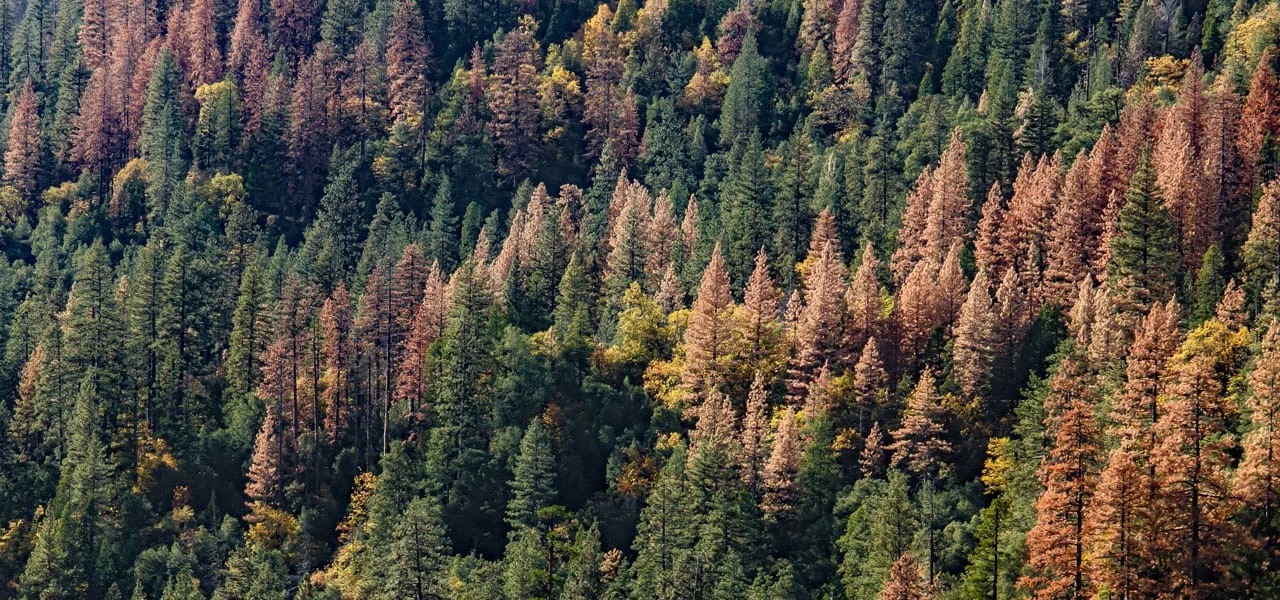
How Winter Drought Damages Your Landscape
Lack of snow during winter doesn’t just affect our Colorado ski areas, it also impacts all of the plants in your landscape. Some plants are especially susceptible to lack of winter moisture, including:
- evergreens (particularly shallow-rooted spruce)
- trees that are already stressed from disease, insects or nearby construction
- trees, shrubs or perennials planted within the last couple of years
- lawns that have been cut too short or weren’t well watered in fall
In general, about 10-13 inches of snow is equivalent to 1 inch of rain. However, this can vary greatly depending on temperatures (in very cold weather we need up to 50 inches of snow to get 1 inch of water!) and the type of precipitation (sleet and freezing rain carry more moisture).
Without sufficient snow cover, the Colorado Front Range and foothills don’t get enough water when snow melts in spring, leaving trees and plants highly stressed by the time the summer heat arrives. Plus, the soil dries out quickly in the dry, cold air of winter when it isn’t covered by snow, worsening the impact of drought conditions.
Keep in mind that drought conditions are impacted by exposure to sun and wind. Areas that are south and west facing, as well as areas that get a lot of wind, may see even worse effects from lack of water.
Effects of Winter Drought
The consequences of winter drought can be severe. Lack of water affects not only the visible parts of plants, such as leaves (leaves curl up and drop, needles turn brown and fall off), but also the plant roots (when they dry out they can’t absorb what they need from the soil).
The relationship between soil and tree roots is the single greatest influence on a tree’s health. Drought stress can affect the chemical, physical, and biological activities in soil that are essential for plant and soil health. When these processes are interrupted, trees cannot draw enough moisture or nutrients from the soil, leading to reduced vigor, smaller leaves in spring, and compromised overall health.
Lack of water also invites insects and disease to invade drought stressed plants. Bark Beetles (including Ips beetles), certain mites, and aphids are more prevalent in times of drought because a stressed tree is less able to fight them off. Drought also reduces beneficial insect populations that typically feed on mites and aphids, making the situation worse.
Preventing Winter Drought Damage
To minimize the damage caused by lack of winter snow cover, consider doing the following:
- Use drought-resistant plants that are better able to tolerate extended periods with less moisture. This publication has some excellent choices of low-water native plants for Colorado’s Front Range and foothills.
- Water your landscape once or twice a month during winter. See our article on winter watering for details on how to do this.
- Provide a 2-4” cover of organic mulch around plants and trees to retain soil moisture
- Be vigilant in spring and summer to identify any insect or disease problems before they cause significant damage. If caught early, many issues can be successfully treated.
- Maintain healthy soil that can retain water by using plenty of organic matter (e.g., compost, leaf mold) and minimizing the use of synthetic fertilizers. Consider using special soil conditioners that build soil's ability to hold water and help plants hold onto moisture.
NOTICE
The winter of 2017/2018 has so far been the third driest on record (since the late 1800’s). You should be watering all susceptible plants at least every three weeks. And if you’re not able to reliably water your landscape this winter, give us a call at 303-674-8733 for information about our Winter Watering Service or click the button to request an estimate.



